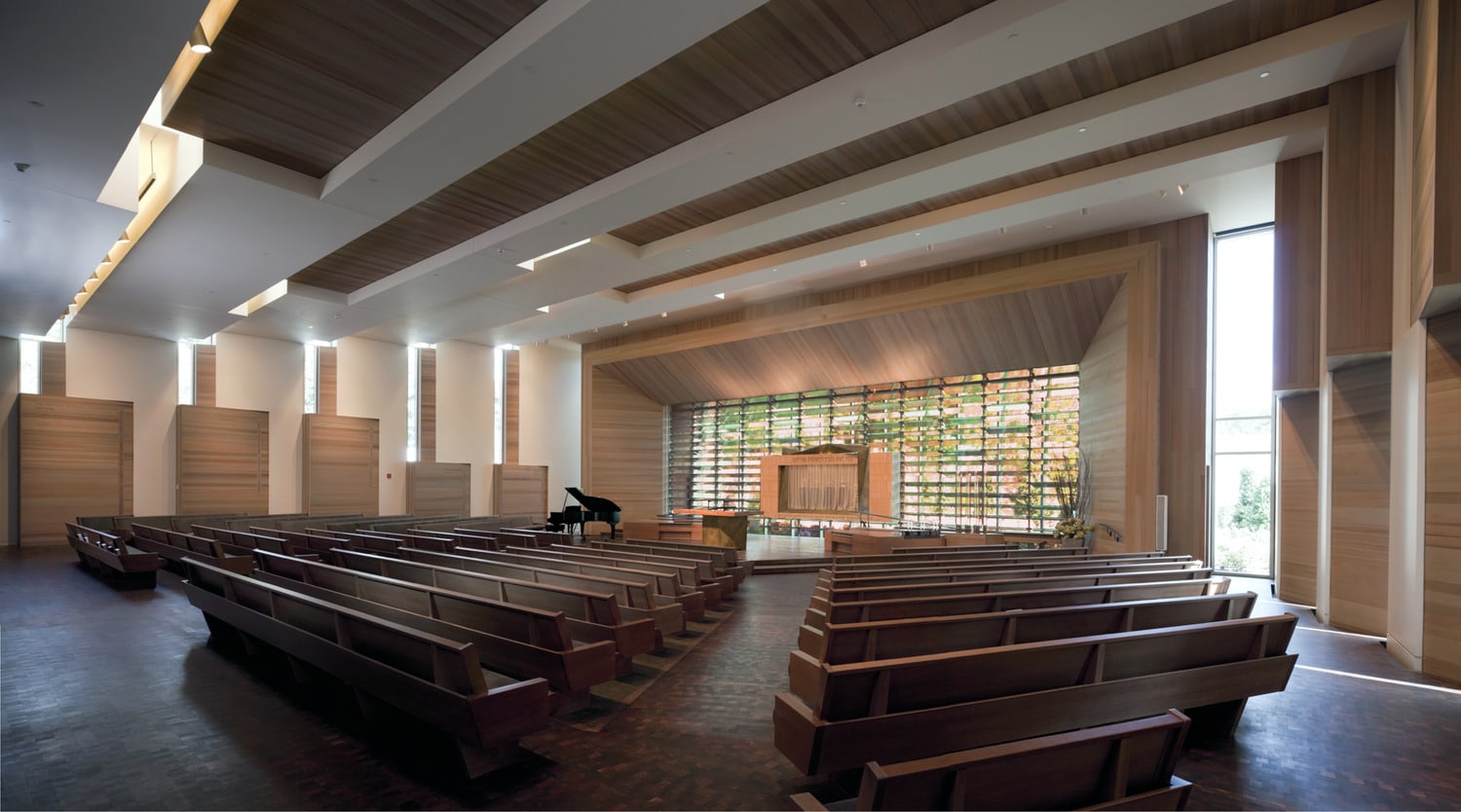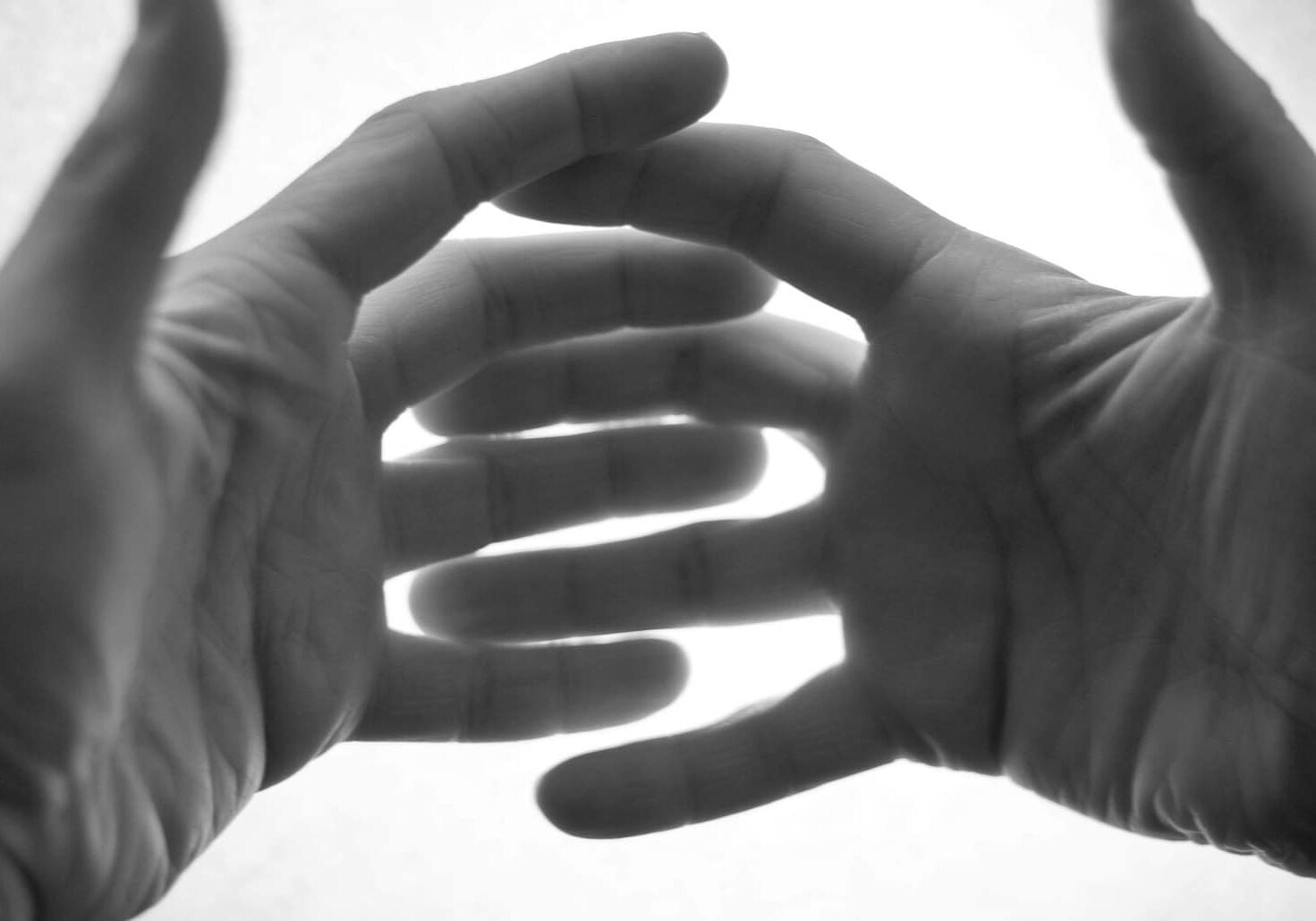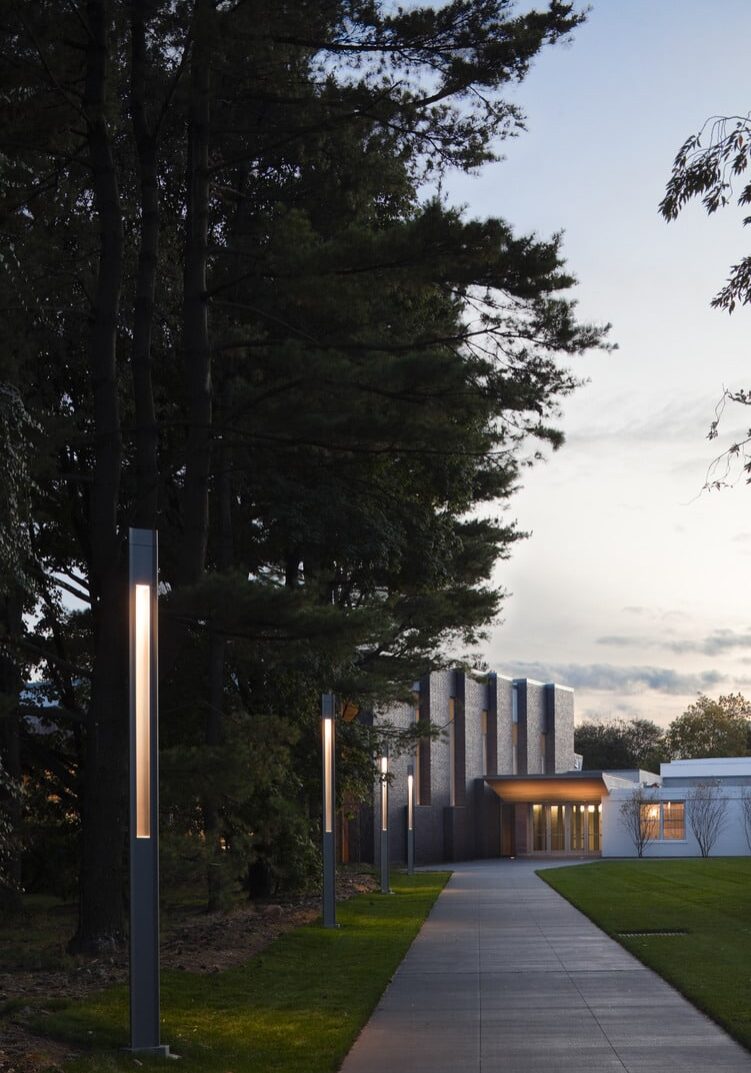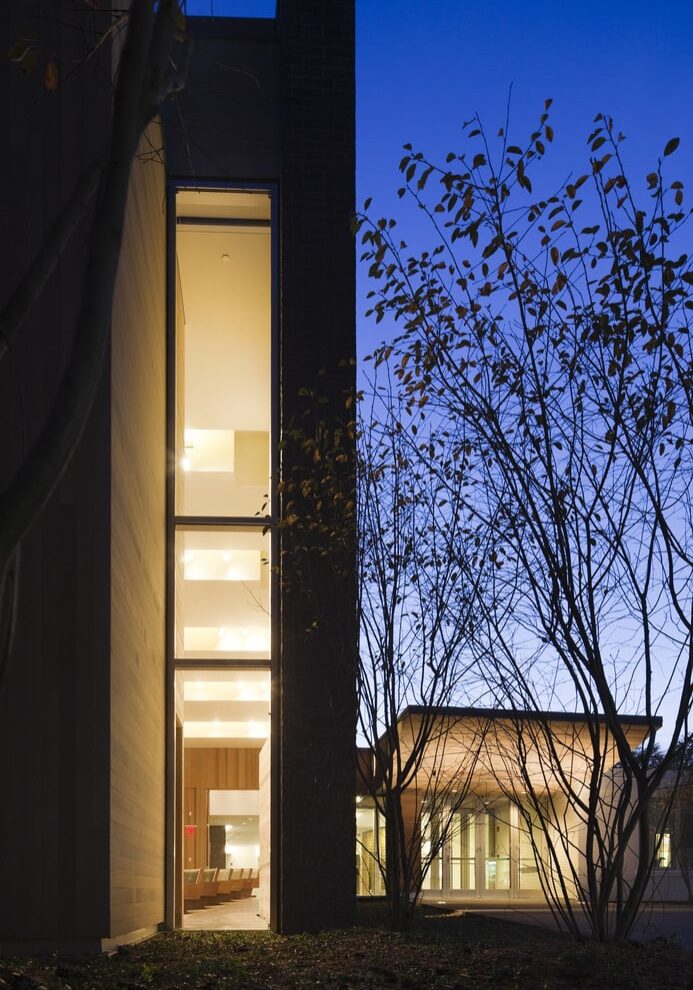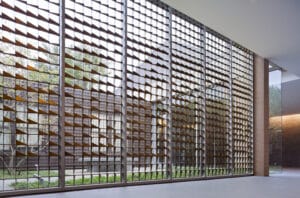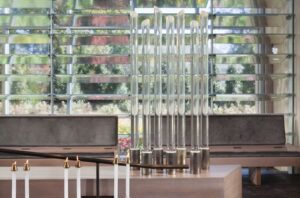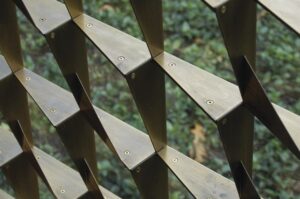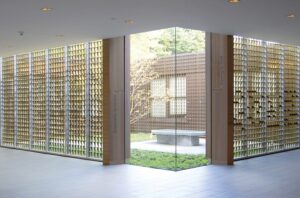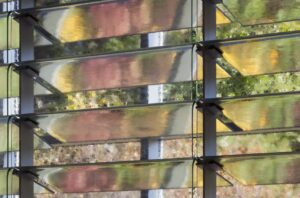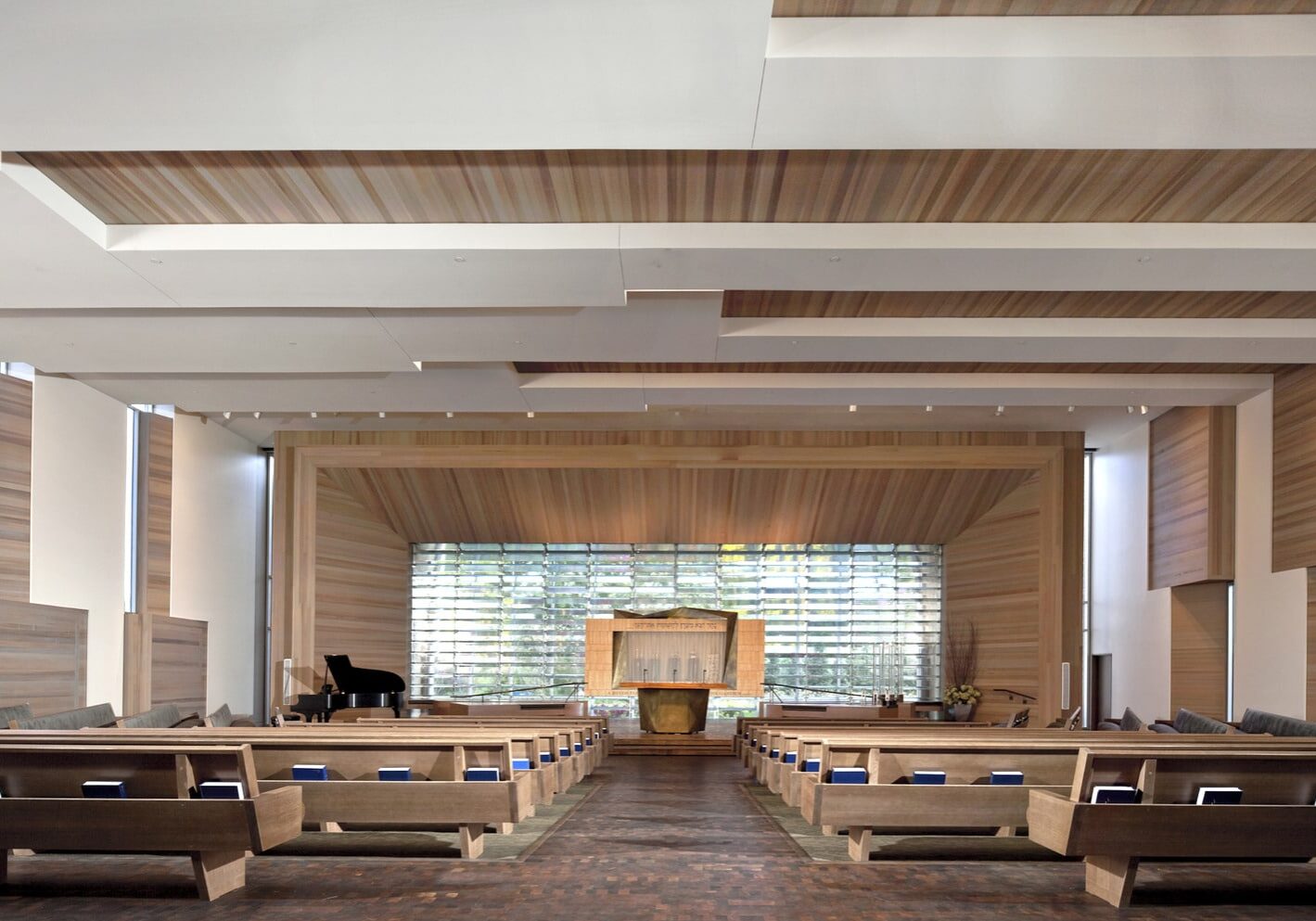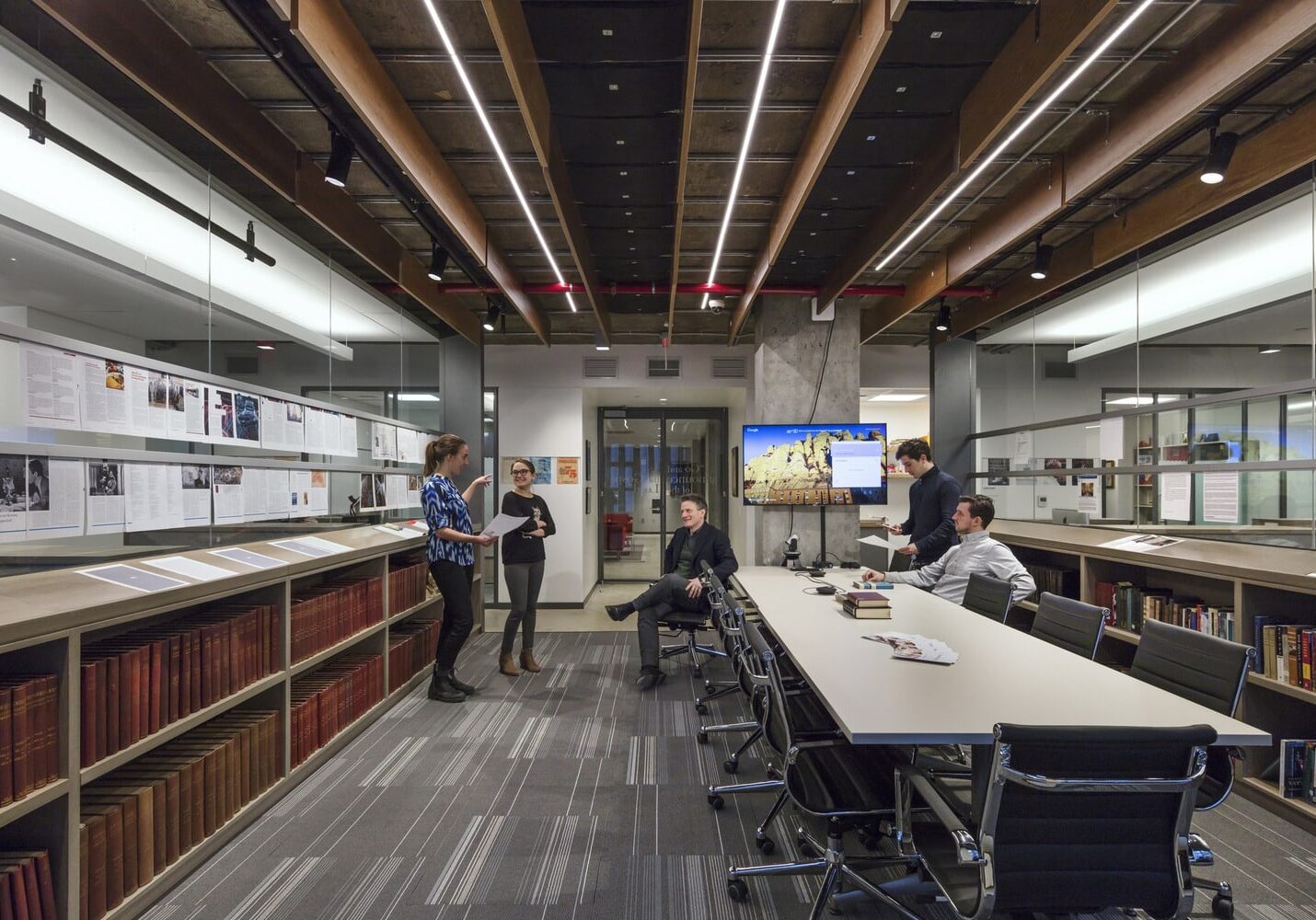Westchester Reform Temple and School
A sanctuary and religious school dedicated to 'repairing the world'.
Westchester Reform Temple, designed in 1959 by Marcel Breuer, has grown into a religious and educational complex. A new master plan envisions an integrated campus for learning and worship, improving and expanding operations while anticipating future needs. Studies proposed a new main sanctuary and converting the existing one into classrooms. The Sanctuary, Religious School, and Study Center are based on Tikkun Olam – ‘repairing the world’. Seven cedar and plaster bands, broken by daylight, represent our world’s efforts. The seventh band frames the ark and connects to the outside. When combined with the social hall, twelve bands represent the twelve Tribes of Israel. A memorial garden with bronze yarzheit screens connects existing and new buildings, ensuring minimal disruption during construction.
Seven cedar and plaster bands of varying dimensions are broken by daylight representing our world’s finished and unfinished efforts.
Interpereting Tikkun Olam: interlocking fingers, held apart, not quite meeting, separated by light
From extensive studies of schedule, program, traffic, mission and liturgy that engaged the broadest constituencies of the Temple, the Master Plan proposed a new main sanctuary adjacent to the existing building and converting the existing sanctuary into new classrooms.
Approved as the most economical option with the most opportunity for the client to meet their stated objectives, the Master Plan set the stage for fund raising and public review.
A sanctuary and religious school dedicated to 'repairing the world'.
Westchester Reform Temple, designed in 1959 by Marcel Breuer, has grown into a religious and educational complex. A new master plan envisions an integrated campus for learning and worship, improving and expanding operations while anticipating future needs. Studies proposed a new main sanctuary and converting the existing one into classrooms. The Sanctuary, Religious School, and Study Center are based on Tikkun Olam – ‘repairing the world’. Seven cedar and plaster bands, broken by daylight, represent our world’s efforts. The seventh band frames the ark and connects to the outside. When combined with the social hall, twelve bands represent the twelve Tribes of Israel. A memorial garden with bronze yarzheit screens connects existing and new buildings, ensuring minimal disruption during construction.
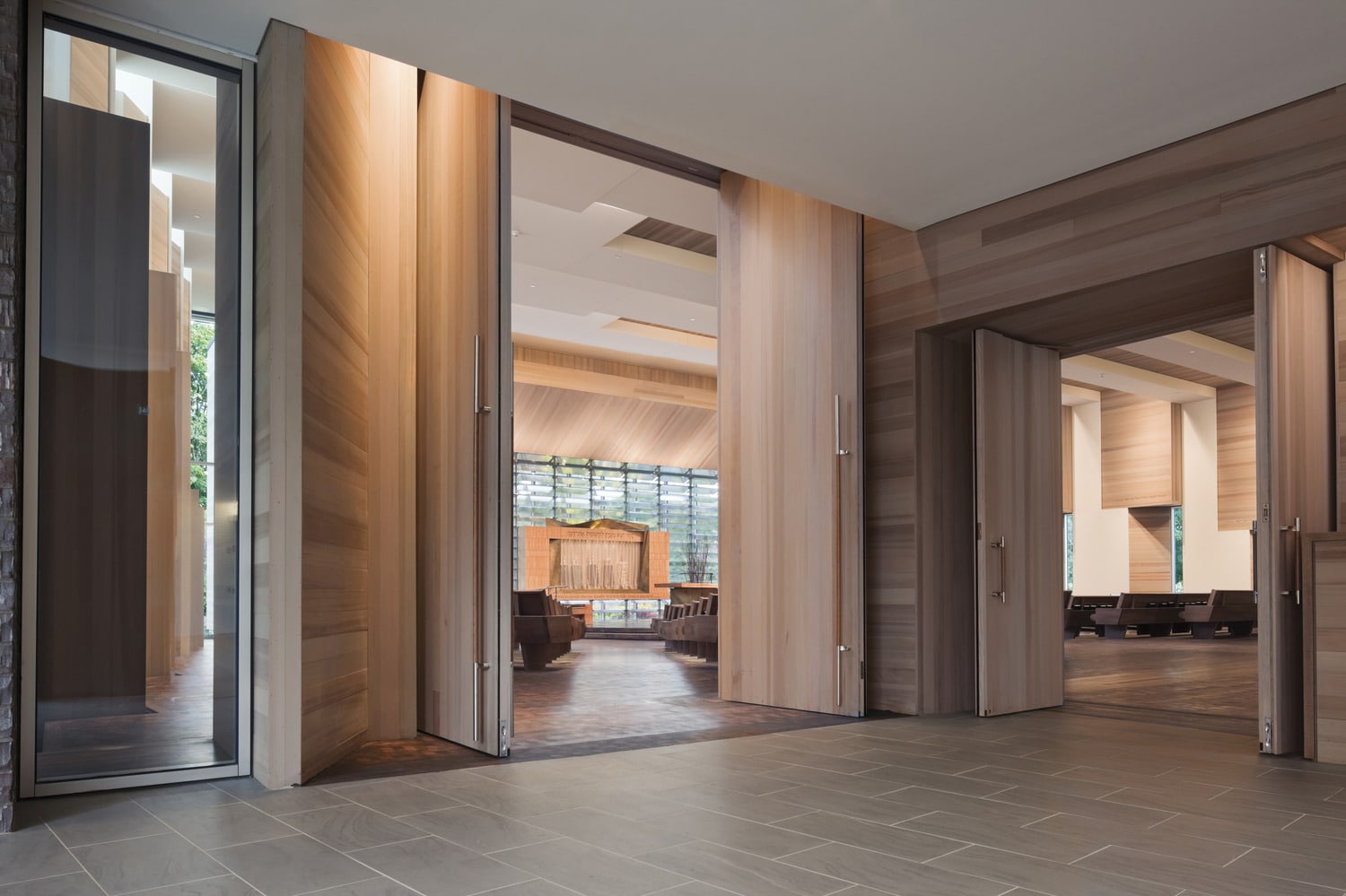
The view from the lobby reveals the cedar-lined sanctuary beyond, where light filters through the sculpted east wall to create a serene, luminous focal point.
![Sections Building [Converted] Sections Building [Converted]](https://marveldesigns.com/wp-content/uploads/0351_Westchester-Reform-Temple_N64_medium.jpg)
Studies of light over the course of a day and year helped define the glass profiles for the east wall.
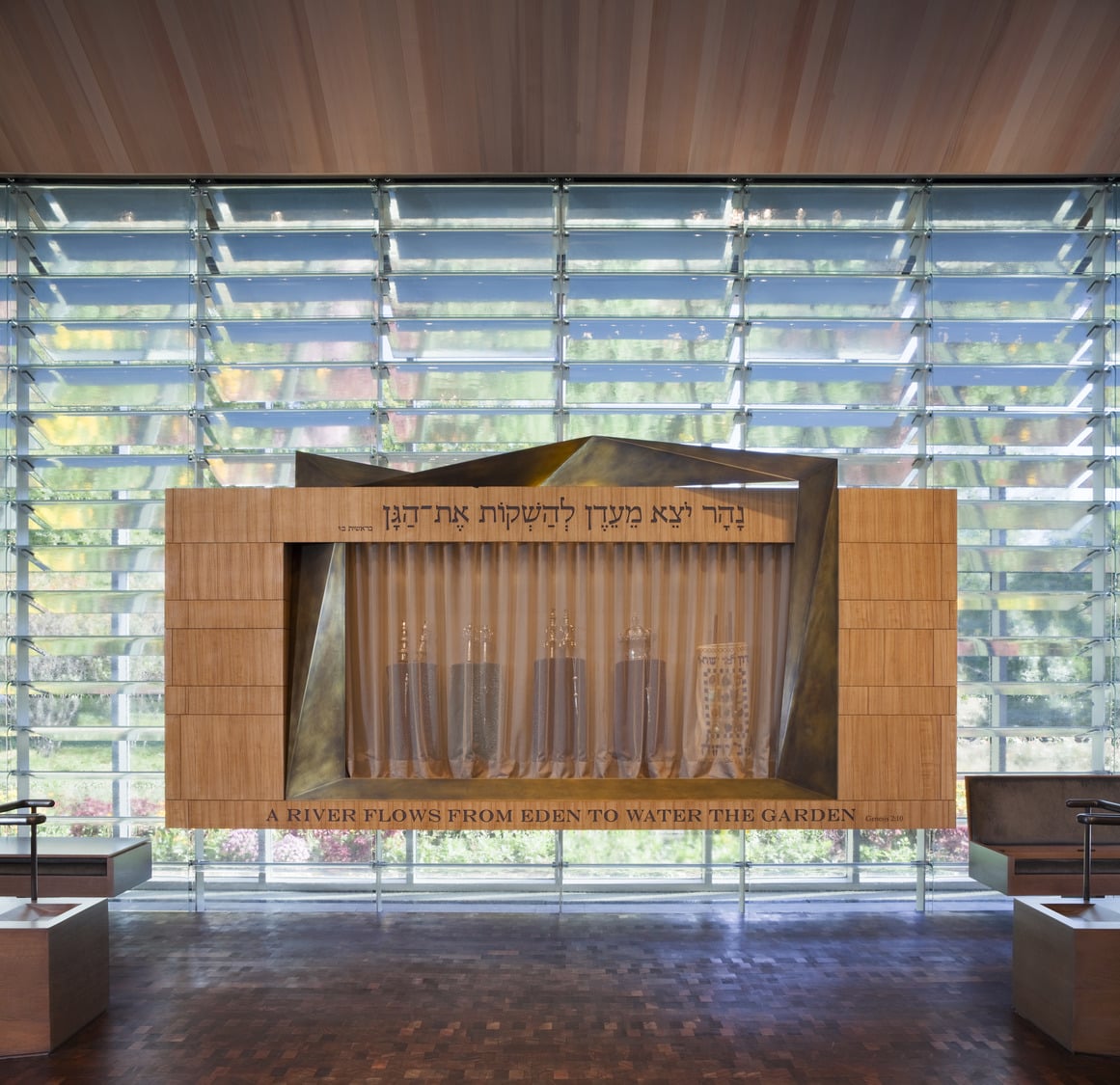
The Ark, framed in bronze and olive ash, anchors the sanctuary’s luminous east wall. Mirrored glass louvers reflect the garden beyond, uniting nature, light, and spiritual symbolism.

Seven cedar and plaster bands of varying dimensions are broken by daylight representing our world’s finished and unfinished efforts.
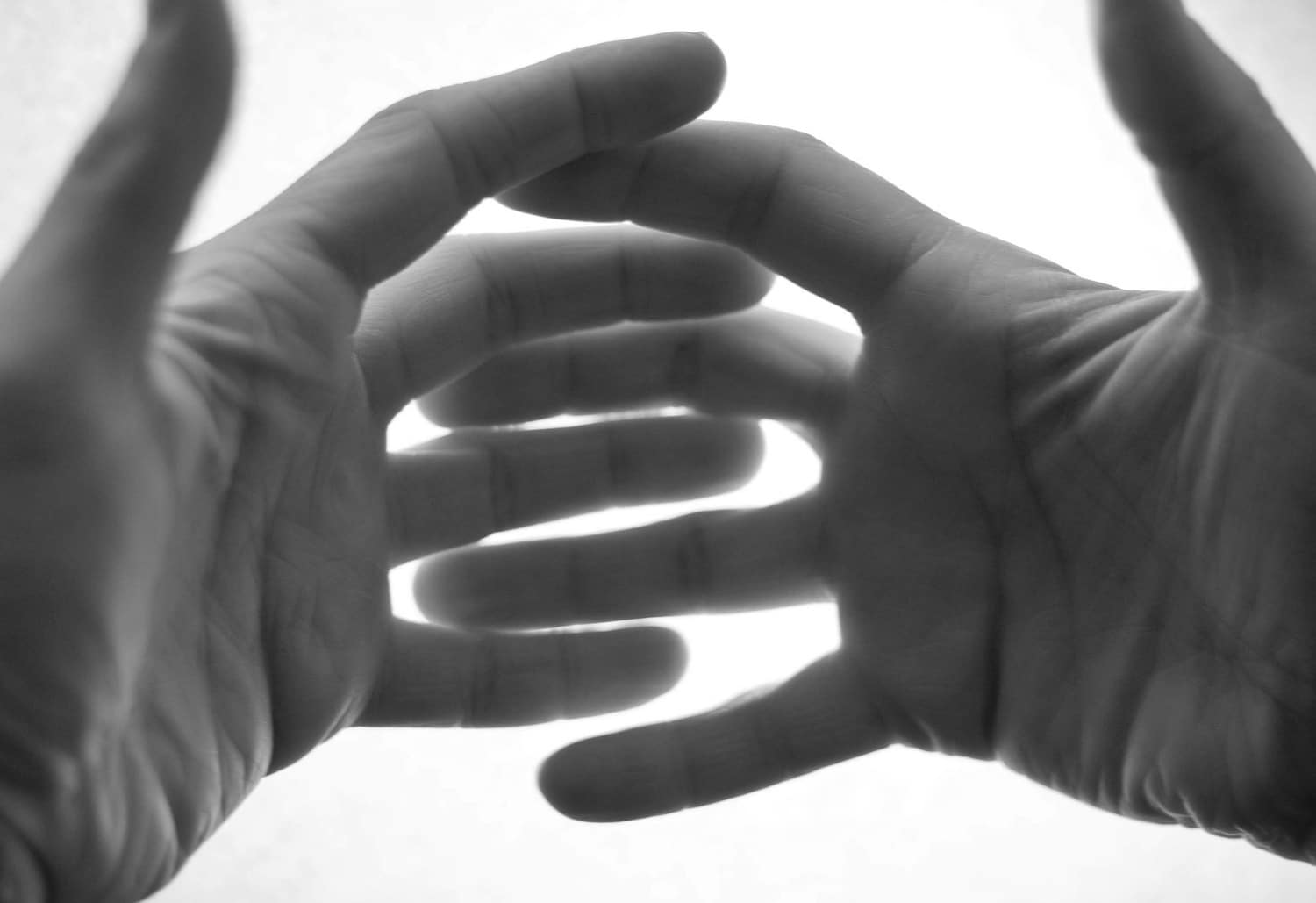
Interpereting Tikkun Olam: interlocking fingers, held apart, not quite meeting, separated by light
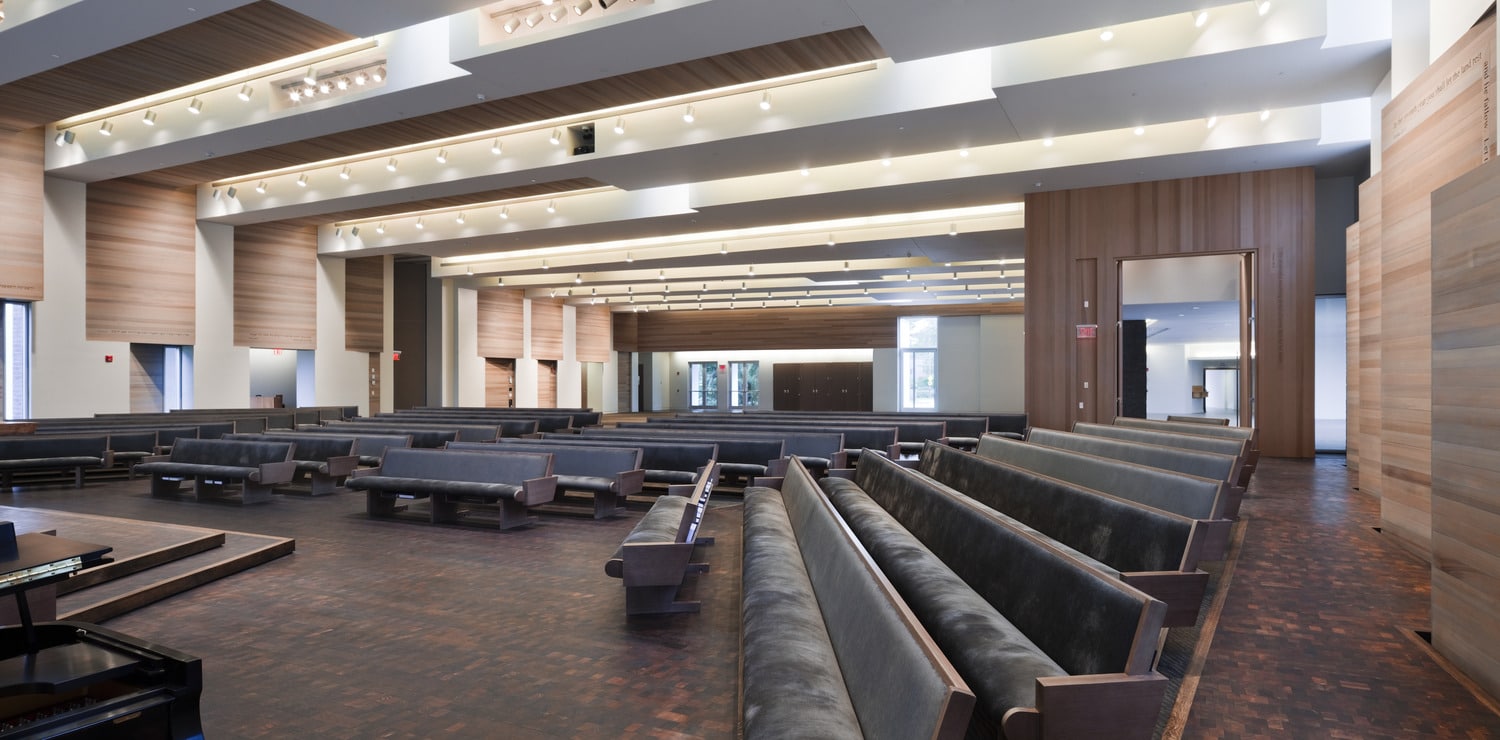
Flexible seating and acoustically tuned ceilings allow the sanctuary to transform for daily worship, gatherings, or High Holy Day services.
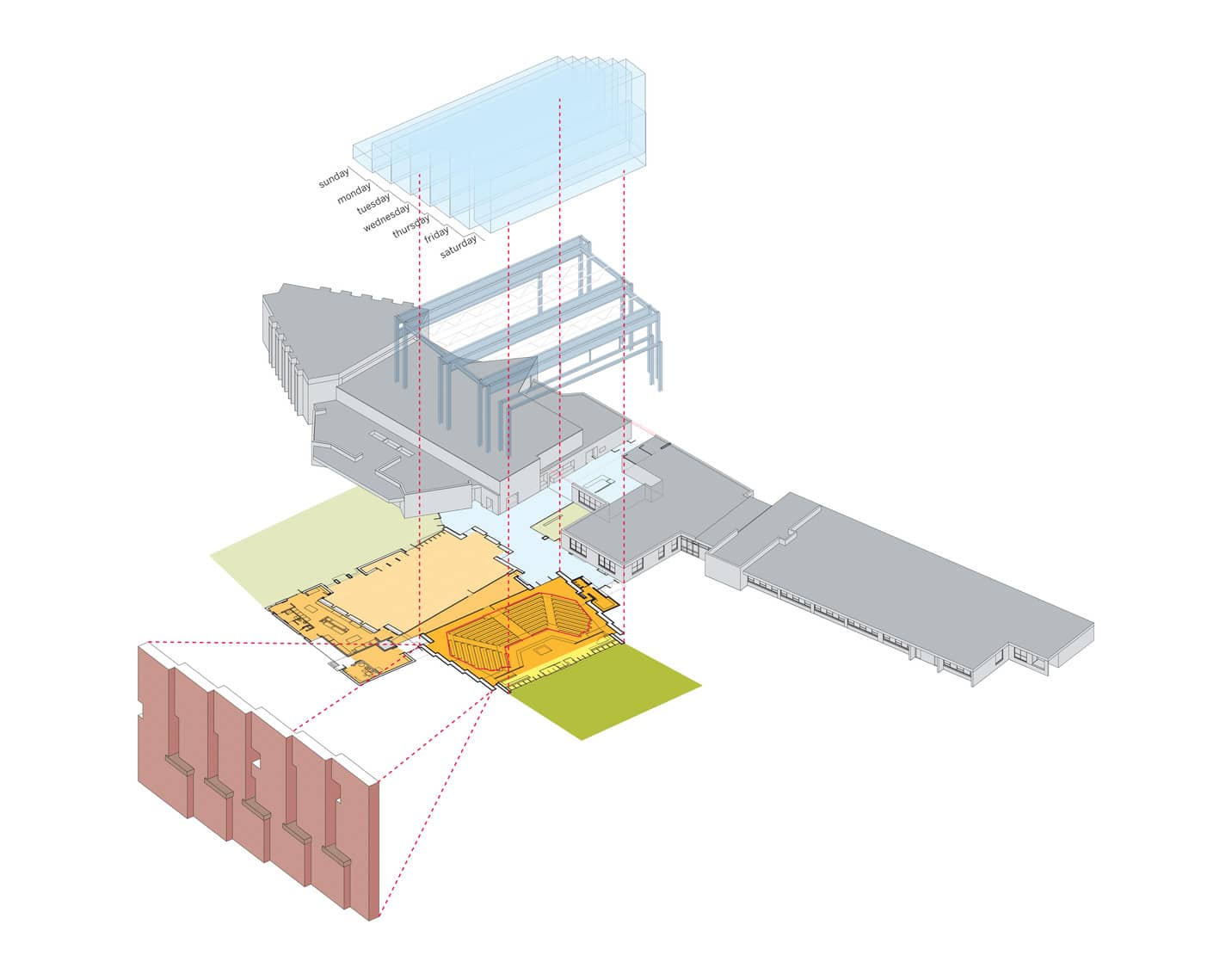
An axonometric diagram revealing the sanctuary, classrooms, and circulation zones of the expanded campus, illustrating how the new volumes interlock with the original 1959 Breuer structure.
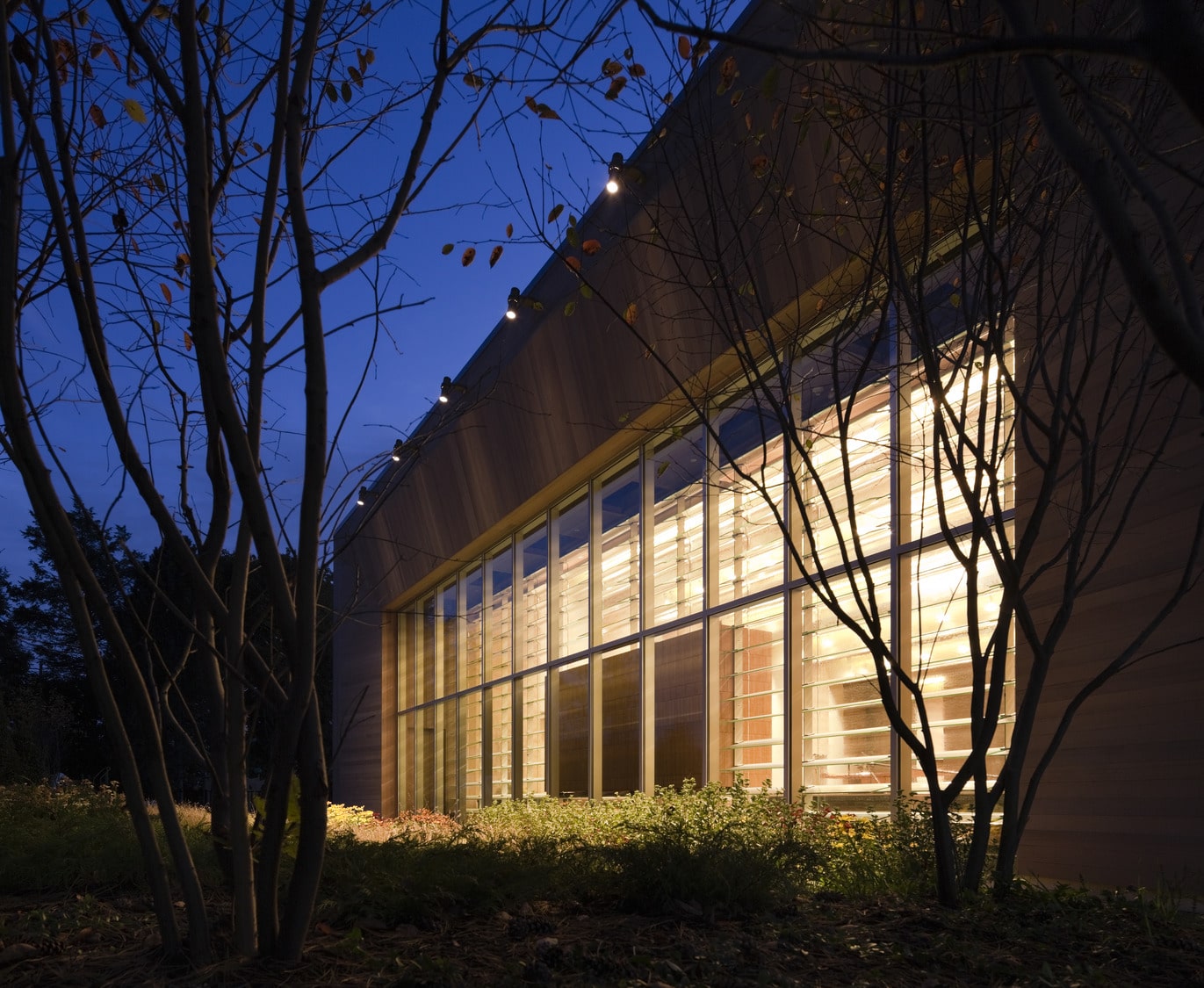
The custom-designed East Wall merges a subtle view into the garden revealing the world of nature, an idealized reflection of the garden as the colorful diverse world of nature and thought.
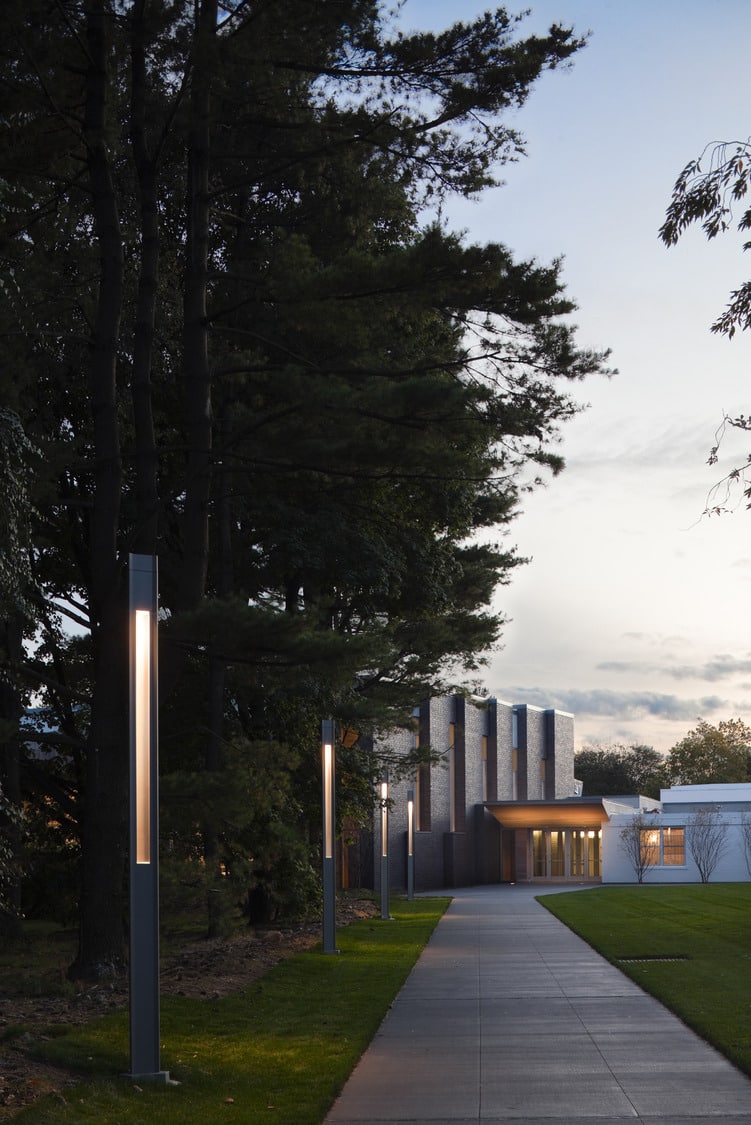
The custom-designed East Wall merges a subtle view into the garden revealing the world of nature, an idealized reflection of the garden as the colorful diverse world of nature and thought.
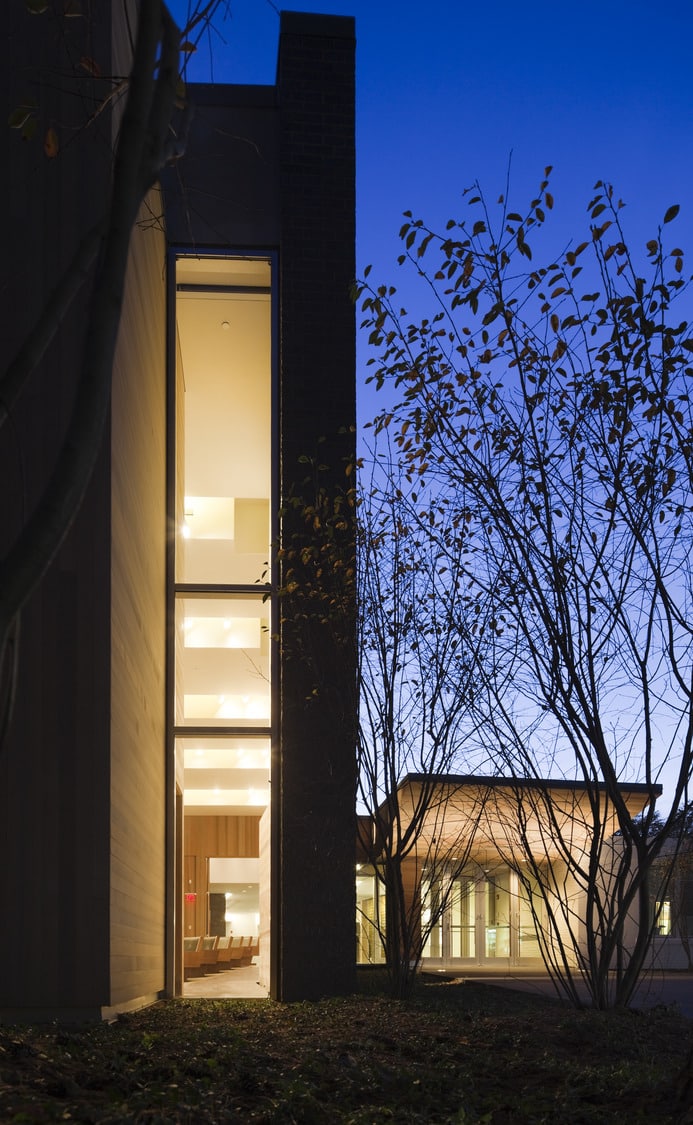
Approved as the most economical option with the most opportunity for the client to meet their stated objectives, the Master Plan set the stage for fund raising and public review.
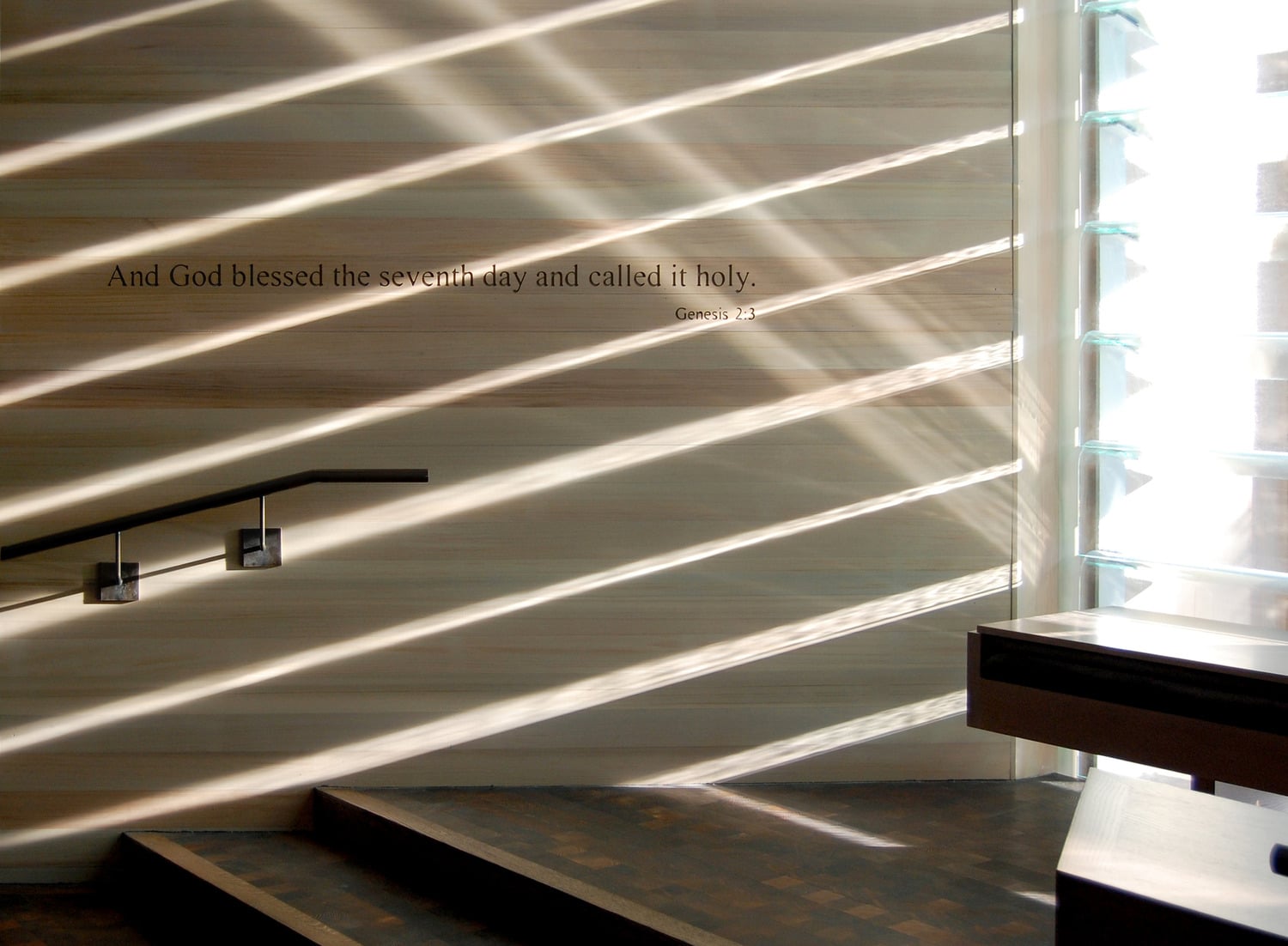
Sunlight filters through the sculpted glass louvers of the east wall, casting shifting patterns across the sanctuary and illuminating the inscription that sanctifies the seventh day.
Westchester Reform Temple and School
A sanctuary and religious school dedicated to 'repairing the world'.
Westchester Reform Temple, designed in 1959 by Marcel Breuer, has grown into a religious and educational complex. A new master plan envisions an integrated campus for learning and worship, improving and expanding operations while anticipating future needs. Studies proposed a new main sanctuary and converting the existing one into classrooms. The Sanctuary, Religious School, and Study Center are based on Tikkun Olam – ‘repairing the world’. Seven cedar and plaster bands, broken by daylight, represent our world’s efforts. The seventh band frames the ark and connects to the outside. When combined with the social hall, twelve bands represent the twelve Tribes of Israel. A memorial garden with bronze yarzheit screens connects existing and new buildings, ensuring minimal disruption during construction.
Seven cedar and plaster bands of varying dimensions are broken by daylight representing our world’s finished and unfinished efforts.
Interpereting Tikkun Olam: interlocking fingers, held apart, not quite meeting, separated by light
From extensive studies of schedule, program, traffic, mission and liturgy that engaged the broadest constituencies of the Temple, the Master Plan proposed a new main sanctuary adjacent to the existing building and converting the existing sanctuary into new classrooms.
Approved as the most economical option with the most opportunity for the client to meet their stated objectives, the Master Plan set the stage for fund raising and public review.
A sanctuary and religious school dedicated to 'repairing the world'.
Westchester Reform Temple, designed in 1959 by Marcel Breuer, has grown into a religious and educational complex. A new master plan envisions an integrated campus for learning and worship, improving and expanding operations while anticipating future needs. Studies proposed a new main sanctuary and converting the existing one into classrooms. The Sanctuary, Religious School, and Study Center are based on Tikkun Olam – ‘repairing the world’. Seven cedar and plaster bands, broken by daylight, represent our world’s efforts. The seventh band frames the ark and connects to the outside. When combined with the social hall, twelve bands represent the twelve Tribes of Israel. A memorial garden with bronze yarzheit screens connects existing and new buildings, ensuring minimal disruption during construction.

The view from the lobby reveals the cedar-lined sanctuary beyond, where light filters through the sculpted east wall to create a serene, luminous focal point.
![Sections Building [Converted] Sections Building [Converted]](https://marveldesigns.com/wp-content/uploads/0351_Westchester-Reform-Temple_N64_medium.jpg)
Studies of light over the course of a day and year helped define the glass profiles for the east wall.

The Ark, framed in bronze and olive ash, anchors the sanctuary’s luminous east wall. Mirrored glass louvers reflect the garden beyond, uniting nature, light, and spiritual symbolism.

Seven cedar and plaster bands of varying dimensions are broken by daylight representing our world’s finished and unfinished efforts.

Interpereting Tikkun Olam: interlocking fingers, held apart, not quite meeting, separated by light

Flexible seating and acoustically tuned ceilings allow the sanctuary to transform for daily worship, gatherings, or High Holy Day services.

An axonometric diagram revealing the sanctuary, classrooms, and circulation zones of the expanded campus, illustrating how the new volumes interlock with the original 1959 Breuer structure.

The custom-designed East Wall merges a subtle view into the garden revealing the world of nature, an idealized reflection of the garden as the colorful diverse world of nature and thought.

The custom-designed East Wall merges a subtle view into the garden revealing the world of nature, an idealized reflection of the garden as the colorful diverse world of nature and thought.

Approved as the most economical option with the most opportunity for the client to meet their stated objectives, the Master Plan set the stage for fund raising and public review.

Sunlight filters through the sculpted glass louvers of the east wall, casting shifting patterns across the sanctuary and illuminating the inscription that sanctifies the seventh day.
Westchester Reform Temple and School
A sanctuary and religious school dedicated to 'repairing the world'.
Westchester Reform Temple, designed in 1959 by Marcel Breuer, has grown into a religious and educational complex. A new master plan envisions an integrated campus for learning and worship, improving and expanding operations while anticipating future needs. Studies proposed a new main sanctuary and converting the existing one into classrooms. The Sanctuary, Religious School, and Study Center are based on Tikkun Olam – ‘repairing the world’. Seven cedar and plaster bands, broken by daylight, represent our world’s efforts. The seventh band frames the ark and connects to the outside. When combined with the social hall, twelve bands represent the twelve Tribes of Israel. A memorial garden with bronze yarzheit screens connects existing and new buildings, ensuring minimal disruption during construction.
Seven cedar and plaster bands of varying dimensions are broken by daylight representing our world’s finished and unfinished efforts.
Interpereting Tikkun Olam: interlocking fingers, held apart, not quite meeting, separated by light
From extensive studies of schedule, program, traffic, mission and liturgy that engaged the broadest constituencies of the Temple, the Master Plan proposed a new main sanctuary adjacent to the existing building and converting the existing sanctuary into new classrooms.
Approved as the most economical option with the most opportunity for the client to meet their stated objectives, the Master Plan set the stage for fund raising and public review.
A sanctuary and religious school dedicated to 'repairing the world'.
Westchester Reform Temple, designed in 1959 by Marcel Breuer, has grown into a religious and educational complex. A new master plan envisions an integrated campus for learning and worship, improving and expanding operations while anticipating future needs. Studies proposed a new main sanctuary and converting the existing one into classrooms. The Sanctuary, Religious School, and Study Center are based on Tikkun Olam – ‘repairing the world’. Seven cedar and plaster bands, broken by daylight, represent our world’s efforts. The seventh band frames the ark and connects to the outside. When combined with the social hall, twelve bands represent the twelve Tribes of Israel. A memorial garden with bronze yarzheit screens connects existing and new buildings, ensuring minimal disruption during construction.

The view from the lobby reveals the cedar-lined sanctuary beyond, where light filters through the sculpted east wall to create a serene, luminous focal point.
![Sections Building [Converted] Sections Building [Converted]](https://marveldesigns.com/wp-content/uploads/0351_Westchester-Reform-Temple_N64_medium.jpg)
Studies of light over the course of a day and year helped define the glass profiles for the east wall.

The Ark, framed in bronze and olive ash, anchors the sanctuary’s luminous east wall. Mirrored glass louvers reflect the garden beyond, uniting nature, light, and spiritual symbolism.

Seven cedar and plaster bands of varying dimensions are broken by daylight representing our world’s finished and unfinished efforts.

Interpereting Tikkun Olam: interlocking fingers, held apart, not quite meeting, separated by light

Flexible seating and acoustically tuned ceilings allow the sanctuary to transform for daily worship, gatherings, or High Holy Day services.

An axonometric diagram revealing the sanctuary, classrooms, and circulation zones of the expanded campus, illustrating how the new volumes interlock with the original 1959 Breuer structure.

The custom-designed East Wall merges a subtle view into the garden revealing the world of nature, an idealized reflection of the garden as the colorful diverse world of nature and thought.

The custom-designed East Wall merges a subtle view into the garden revealing the world of nature, an idealized reflection of the garden as the colorful diverse world of nature and thought.

Approved as the most economical option with the most opportunity for the client to meet their stated objectives, the Master Plan set the stage for fund raising and public review.


